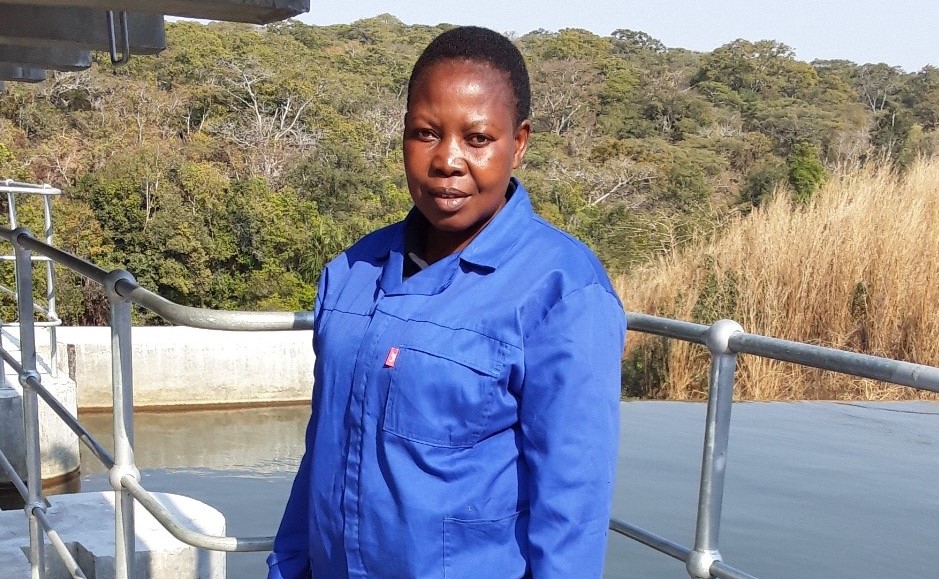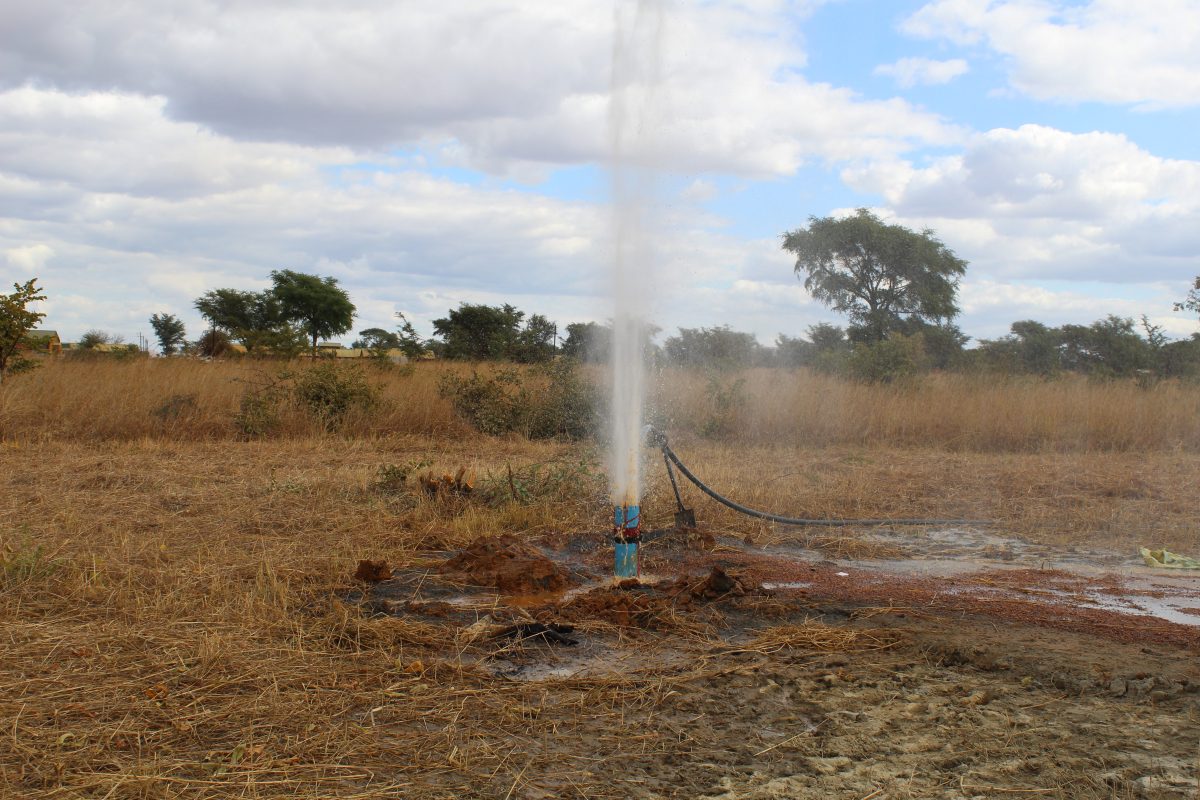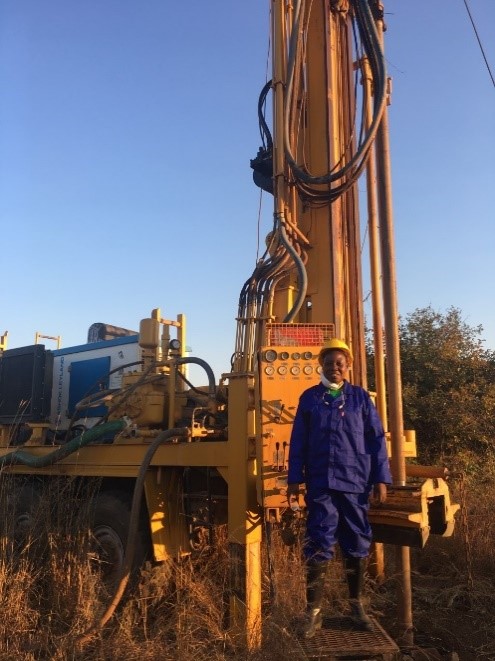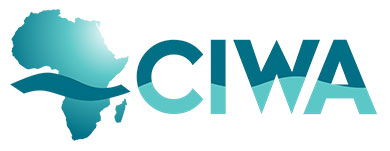Woman engineer paves the way for groundwater access in Chongwe District, Zambia
Posted in : Blog on 16 October 2020
Eng. Beatrice Kanyamuna-Pole, Senior Hydrogeologist, in the Department of Water Resource Development, Zambia shares her journey as a woman contributing to the water sector. She speaks about her experiences as the only woman engineer in the field in the Groundwater Mapping and Wellfield Development Project in the Chongwe District, located 125 km to the east of Zambia’s capital, Lusaka.
The Chongwe pilot project is part of the Sustainable Groundwater Management in the SADC Member States Project funded by the Cooperation in International Waters in Africa (CIWA) Program and the Global Environment Facility (GEF) through the World Bank and implemented by the SADC-Groundwater Management Institute (GMI).

Tell us about yourself
I am the last of three girls born to my parents in Inonge Village, Kazungula district in the southern part of Zambia. We grew up knowing that water is a precious resource for our survival and wellbeing. Since childhood, we walked 1 km to get water from the Ngwezi river and during the dry season, as the water dried up in the river, we walked approximately 5 km to the nearest handpump in the neighboring village. To save water, we bathed once at night before sleeping.
As a child, I admired the nature and the surroundings of my village and competed with boys to do better. This competitive spirit made me choose geography during my undergraduate studies. After completing my studies, I started teaching, although it did not fulfil my aspirations.
I decided to take a leap of faith and took a ministerial transfer to the water sector as a District Water Officer in Kafue. I was motivated by the work done by engineers, who developed infrastructure to meet the growing water demand. Having been through the challenges of fetching water as a child and young adult, I decided to pursue a career in the sector. I pursued and completed a Postgraduate Diploma in Integrated Environment and Water Management (IEWM) in Sweden and a Postgraduate Diploma in Integrated Water Resources Management (IWRM) at the University of Zambia.
Remembering my personal experiences, I decided to work in the groundwater domain to help address the water challenges faced by people in the rural areas of Zambia. Through my determination, I was offered a scholarship in Germany and completed my Masters in Hydrogeology, Engineering Geology and Environmental Management in 2013.
What is the water situation in Zambia? How is it dealing with water scarcity?
Zambia is a country with water extremities—while the northern part of the country is marred by floods, the southern part experiences severe drought. We deal with water scarcity by drilling boreholes and harvesting rainwater by building hydraulic structures such as dams, weirs, roof/gutters, etc.
Groundwater is a vital source for water supply, especially in Southern Zambia, due to extended droughts. However, groundwater, which is often unmeasured and unmanaged, needs to be managed sustainably to preserve the level and quality of the water table. Currently, insufficient groundwater infrastructure affects access to water severely.
Why did the Zambian Government choose Chongwe? Why was this project needed?
Chongwe has rapidly expanded from a township of 12,160 people in 2010 to over 100,000 in 2020. The population increase has resulted in the growing demand for water to meet various socio-economic needs.
The population growth has created a big gap between water demand and its available sources. In recent years, the town has experienced a recurrent water deficit due to the low water levels in the Chongwe River as climate change affects water patterns and variability.
Furthermore, the weir or a low dam, the primary source of water supply for Chongwe, has been drying up more frequently, for longer duration and its capacity is unable to sustain the growing demand. This led to the need for finding another source to supplement the current water supply, and thus, Chongwe was chosen.
With the financial support from CIWA and the Global Environment Facility (GEF), the SADC Secretariat, through SADC-GMI, initiated this pilot project to provide groundwater to the community. CIWA’s funding has helped develop the wellfield.

The project is being completed during COVID-19 pandemic. How has it impacted the focus on washing hands due to the pandemic?
COVID-19 led to the partial lockdown of the country, and the project was forced to halt work temporarily. However, to mitigate delays in the project timeline, we restarted by following strict health protocols.
The pandemic improved the hygiene levels of the community as they are aware of the importance of following hygiene practices and are demanding safe and clean water supply. Access to potable water will significantly enhance the community’s ability in dealing with the pandemic.
How has the project benefitted the community?
The project has provided benefits at multiple levels- it employed the local community (around the wellfield) for implementing the project. The community will further benefit in the future through the proposed plantations to protect the environment and have access to a regular piped water supply.
Once completed, the Chongwe town will have increased hours of water supply benefiting 100,000 inhabitants directly.
How has the project approached gender and social inclusion?

Ms Majory Mwale (Engineering Assistant) and I, as a Senior Hydrogeologist, were involved in the planning and execution of this critical project. The project involved women inhabitants by supporting the formation of the Village Water Committee to address their needs and concerns.
SADC-GMI in their implementation of the Sustainable Groundwater Management in SADC Member States Project has always ensured the participation of women. Beside being part of the Chongwe project, I had the opportunity to attend capacity development initiatives such as the Integration of Groundwater into River Basin Organizations in Africa (Lusaka, 2018), Preparing Proposals to Access Funding for Groundwater related Projects (in 2020), Borehole Forensics (Blantyre, Malawi), among others. SADC-GMI also supported other Young Professionals and me to attend the 2018 Waternet Symposium.
How are women, according to you, leading the water agenda at all levels? Please provide any examples from Chongwe.
I notice a small percentage of women leading the water agenda at the global, continental, regional and national levels as compared to men counterparts. However, it is rising at a slow rate. The low participation of women, in my opinion, emanates from the education and career choices as the water sector is perceived as a technical field and women are seen as users rather than planners and developers.
We need more role models to encourage women to enter the field, especially at the grassroots. Gender-inclusive government policies are necessary to encourage more women to study relevant qualifications that will prepare them to join the water sector.
Combined with this, water-related programs should include gender and social inclusion in design and implementation.
If I look at the Chongwe project, women are most vulnerable to water shortages in the community. However, Her Royal Highness Chieftainess Nkhomensha Mukamambo II has provided sound leadership by relentlessly lobbying for the need for increased water supply to improve the condition of Chongwe inhabitants and her efforts have paid off.
As a woman, what challenges have you faced in the water sector, and how did you overcome these?
Women in this field undergo various basic struggles, for example, their voice not being heard. At times, I feel side-lined by men as they doubt my efficiency and work ethic. I always manage to address these challenges through my relentless efforts.
As my job entails supervising men in the field during siting, drilling, pumping test and installations, I have managed to create the team spirit during and after working hours. As a woman, I am pushing boundaries and the agenda as more needs to be done to involve more women in the water sector and ensure that their presence is seen and their voice is amplified.
In your view, what should be done to include more women in the sector?
Dedicated curriculum for teaching and emphasizing the importance of water is necessary to raise interest among students, along with having mentoring sessions with women role models will significantly help encouraging girls to pursue their studies in the water sector.
We also need that education ministries offer specific programs to encourage women to enter the water sector such as women scholarships for higher studies.
Note: The final connection between the wellfield and the line is awaited as COVID-19 delayed the process.


